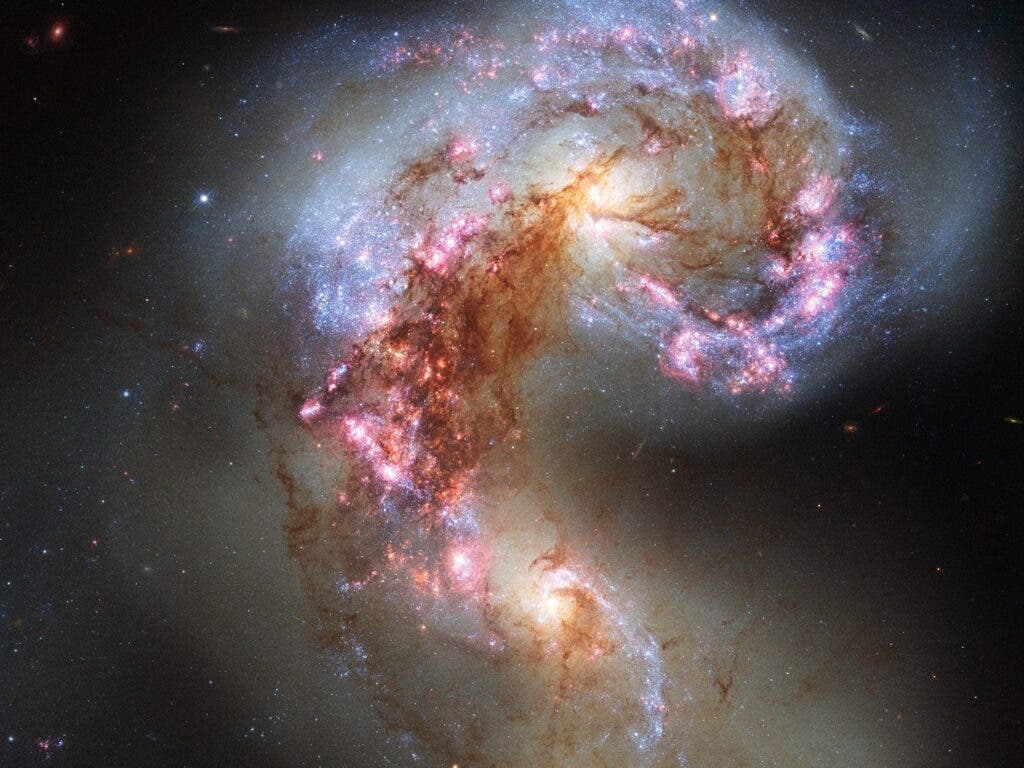New research proposes that the source of life on Earth may not be on our planet at all, but, in fact, on spaceborne dust.

Researchers at Friedrich-Schiller-Universitaet Jena in Germany report that peptides — small-scale proteins — can form on particles of dust under conditions present in outer space. Since all life on our planet relies on proteins, this raises the possibility that the building blocks of life didn’t emerge on Earth at all, but were seeded here from outer space.
The authors propose cosmic molecular clouds as a possible source for these first peptides, although it is currently impossible to confirm that this was the process that seeded life on Earth, or pinpoint a particular structure from whence they came.
Spaceborne, quantumborne — maybe
“Water plays an important role in the conventional way in which peptides are created [by the binding together of individual amino acids],” says Dr Serge Krasnokutski of the Laboratory Astrophysics and Cluster Physics Group of the Max Planck Institute for Astronomy at the University of Jena.
“Our quantum chemical calculations have now shown that the amino acid glycine can be formed through a chemical precursor — called an amino ketene — combining with a water molecule. Put simply: in this case, water must be added for the first reaction step, and water must be removed for the second.”
Peptides are an essential building block of living cells as we know them. They perform a variety of functions within the body such as transporting substances, catalyzing chemical reactions, and forming structural elements inside cells. Peptides are chains of amino acids fused together, and the order and type of amino acids that form the chain give the peptide its final properties.
They are quite complex and ordered structures and likely were the first larger biochemical molecules on Earth. As such, researchers are keen to understand how these peptides came to be.
Some other building blocks of life, including amino acids, nucleobases, and sugars, have been found in meteorites before, which gave us some understanding that the very basic bricks from which organic matter is composed could originate in space. However, as we’ve said before, peptides are complex and highly structured, so they require very specific conditions in which to form. Furthermore, these conditions need to change during the process: first, water must be present; it must then be removed.
Krasnokutski’s team was able to show one reaction pathway through which the production of peptides can occur under cosmic conditions, in a process that requires no liquid water.
“Instead of taking the chemical detour in which amino acids are formed, we wanted to find out whether amino ketene molecules could not be formed instead and combine directly to form peptides,” says Krasnokutski. “And we did this under the conditions that prevail in cosmic molecular clouds, that is to say on dust particles in a vacuum, where the corresponding chemicals are present in abundance: carbon, ammonia, and carbon monoxide.”
The team validated their theory through experiments using an ultra-high vacuum chamber. This experiment involved the use of substrates that mimic cosmic dust, which was mixed together with carbon, ammonia, and carbon monoxide. Everything was then kept at one quadrillionth of normal air pressure and minus 263 degrees Celsius to mimic conditions in outer space.
The peptide polyglycine formed from the substrate under these environmental conditions, the team explains — polyglycine is composed of chains of multiple molecules of glycine, an amino acid, and is, therefore, a peptide. The longest single peptide molecule the team observed consisted of eleven amino acid units linked together. The team further reports that they identified the amino acid ketene in the substrate sample. Ketene is an unstable molecule but highly useful for biological life, as it serves as a key catalyst in the production of other essential compounds.
“The fact that the reaction can take place at such low temperatures at all is due to the amino ketene molecules being extremely reactive. They combine with each other in an effective polymerisation. The product of this is polyglycine,” Krasnokutski explains. “It was nevertheless surprising to us that the polymerisation of amino ketene could happen so easily under such conditions.”
“This is because an energy barrier actually has to be overcome for this to happen. However, it may be that we are helped in this by a special effect of quantum mechanics. In this special reaction step, a hydrogen atom changes its place. However, it is so small that, as a quantum particle, it could not overcome the barrier but was simply able to cross it, so to speak, through the tunnelling effect.”
It may be a bit hard to wrap our heads around such results, as exciting as they may be for researchers looking into the origins of life. Suffice it to say, what the team found is that some of the basic building blocks of life form quite readily in outer space if certain materials are present. Although such results don’t prove that life on Earth originates ultimately in space, it does give researchers ample grounds to consider the cosmos as a likely source.
In the end, it may be that we come to the conclusion that life on Earth is spaceborne — and findings such as these may be remembered as the first step towards that conclusion.
It also raises an exciting possibility; if such molecules can form in space, there’s no reason to believe that Earth was the only planet seeded with them. In other words, the findings should increase our confidence that there is life on other planets. The only thing left to see now is if we find it or not.
The paper “A pathway to peptides in space through the condensation of atomic carbon” has been published in the journal Nature Astronomy.


